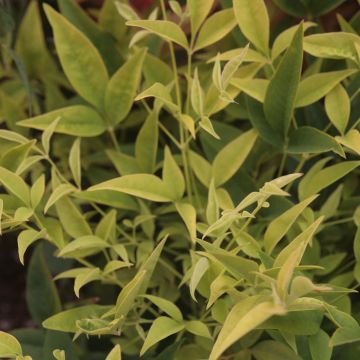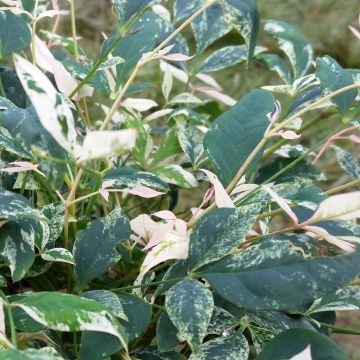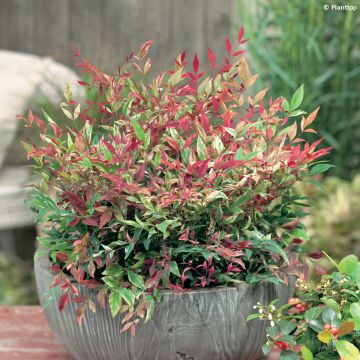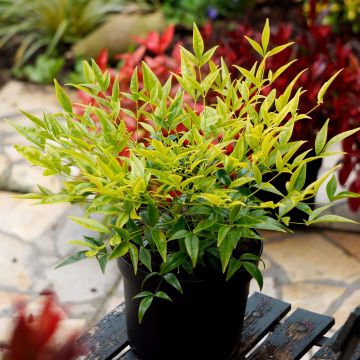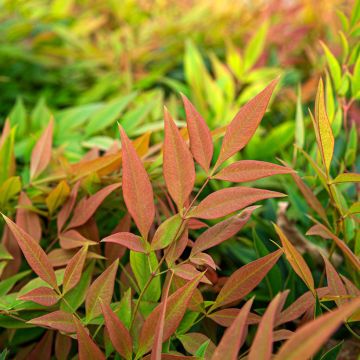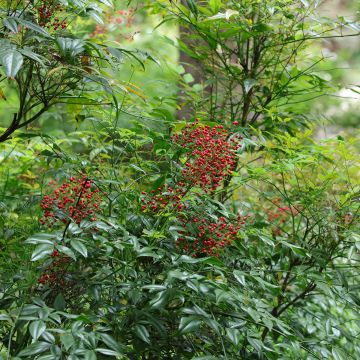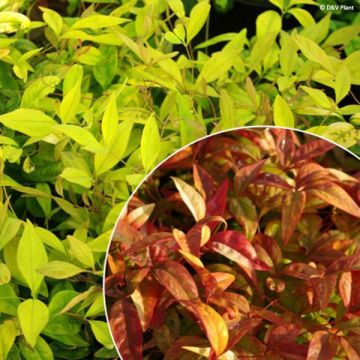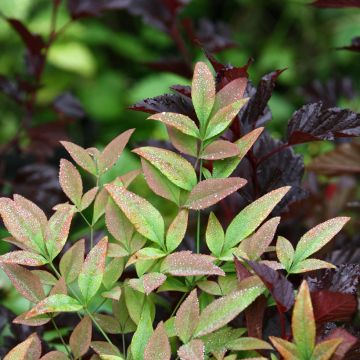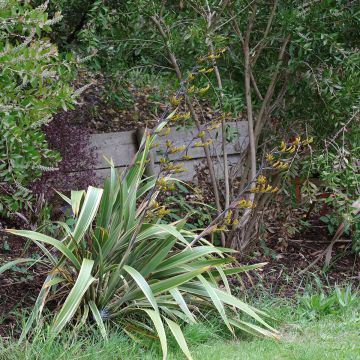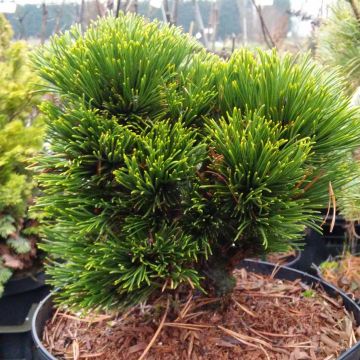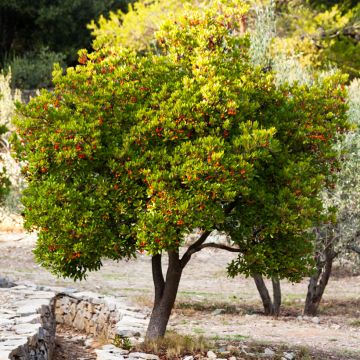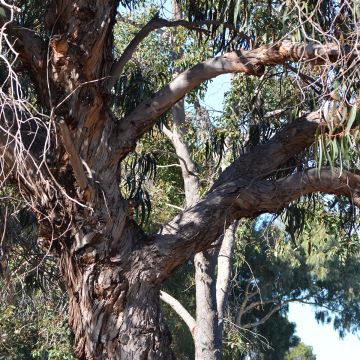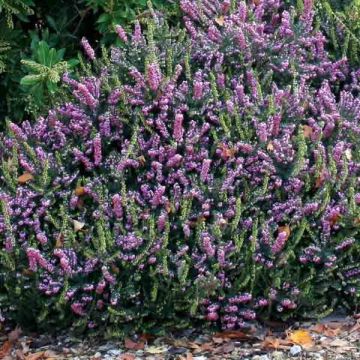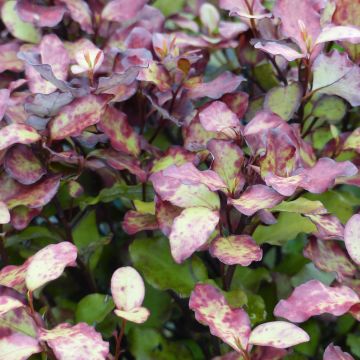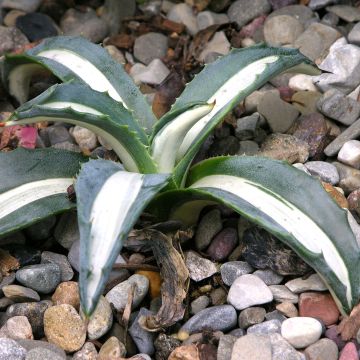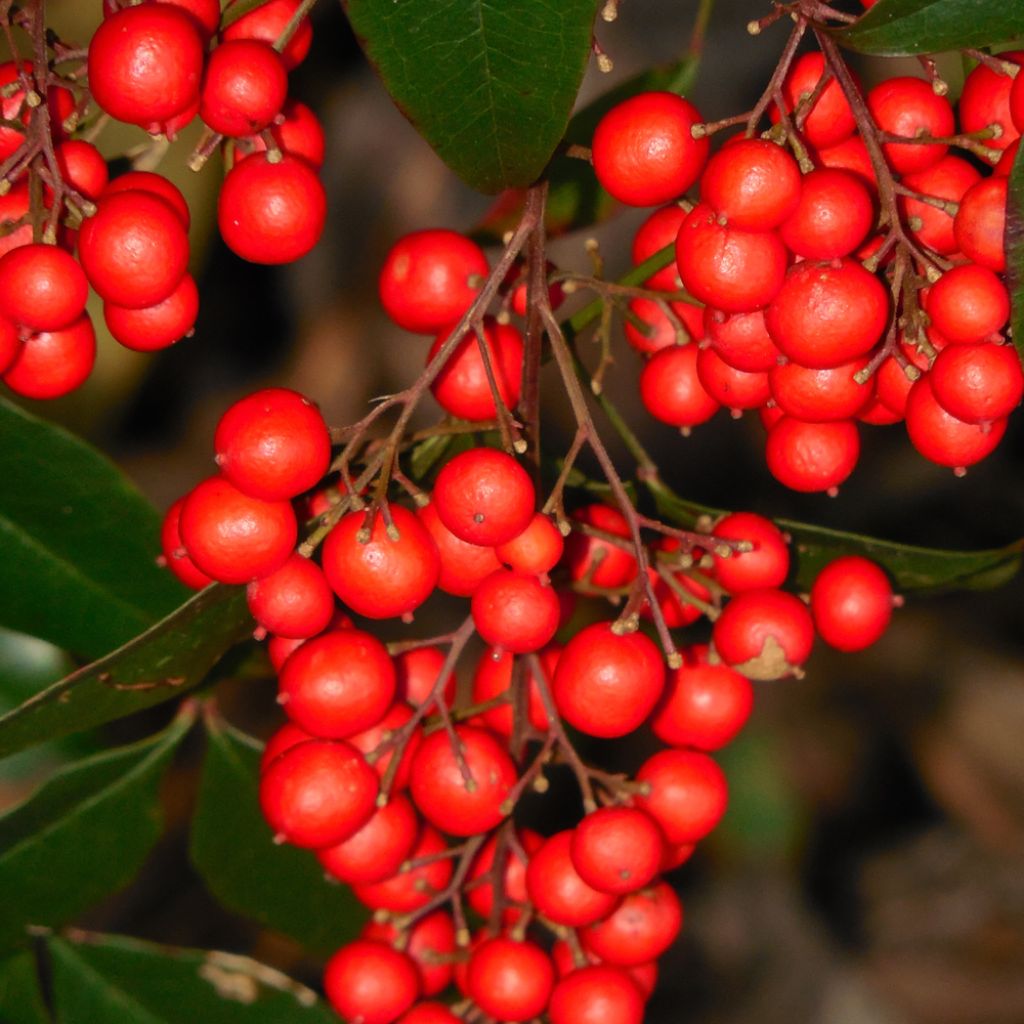

Nandina domestica Richmond - Sacred Bamboo
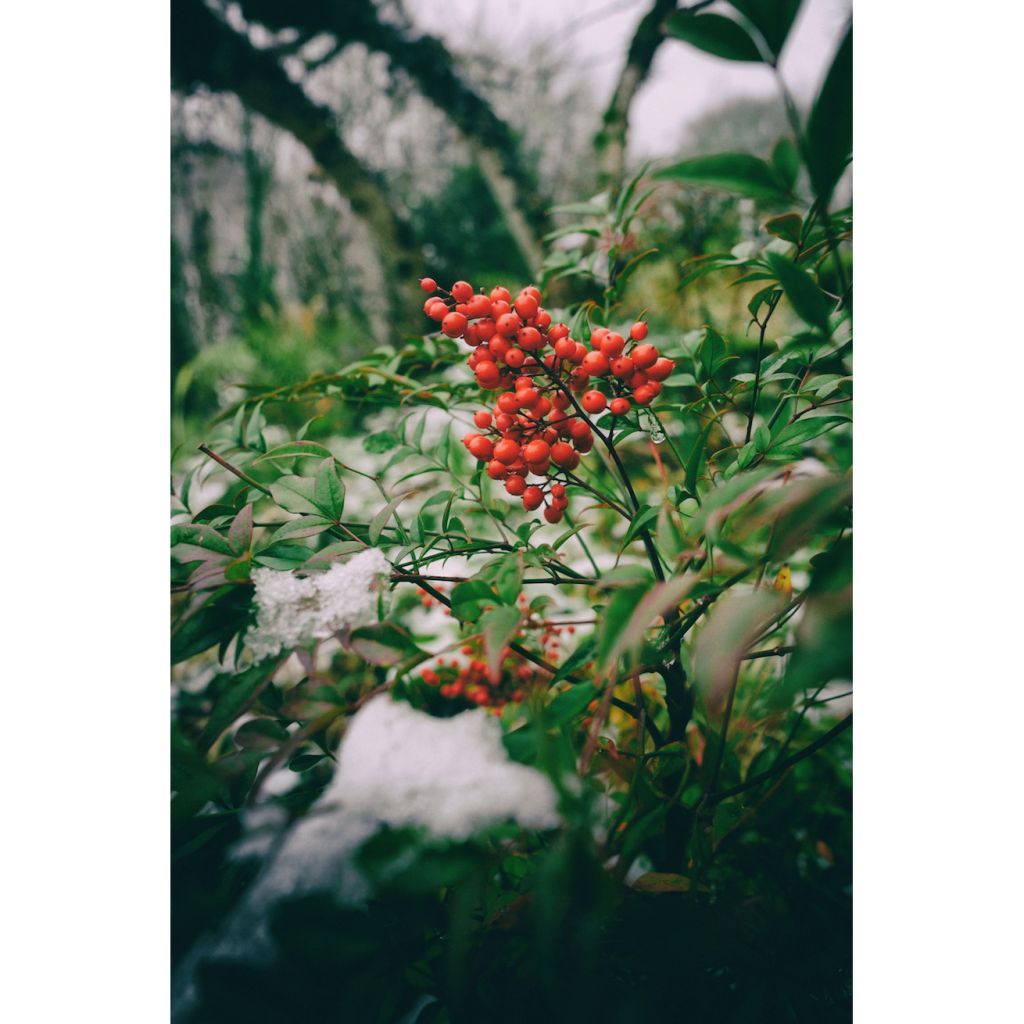

Nandina domestica Richmond - Sacred Bamboo
Nandina domestica Richmond - Sacred Bamboo
Nandina domestica Richmond
Sacred Bamboo, Heavenly Bamboo
This item cannot be shipped to the selected country
Delivery charge from €5.90
Delivery to Corse prohibited
More information
Delivery charge from €5.90
Delivery to Corse prohibited
More information
Schedule delivery date,
and select date in basket
This plant carries a 24 months recovery warranty
More information
We guarantee the quality of our plants for a full growing cycle, and will replace at our expense any plant that fails to recover under normal climatic and planting conditions.
From €5.90 for pickup delivery and €6.90 for home delivery
Express home delivery from €8.90.
Delivery to Corse prohibited: UE law prohibits the import of this plant from mainland France to Corse as part of the fight against Xylella fastidiosa. Please accept our sincere apologies.
More information


Does this plant fit my garden?
Set up your Plantfit profile →
Description
Nandina domestica 'Richmond' is a cultivar of the Sacred Bamboo selected for its particularly abundant fruiting, in dense clusters of bright red fruits, in harmony with its autumn reddened foliage. Its generous summer flowering, in large white panicles, often neighbours the previous year's intense red fruiting, just like its spring shoots. This very beautiful evergreen bush constantly recreates a joyful and changing scene throughout the year. Versatile, accommodating, and sculptural, it finds its place in mass plantings, as a standalone specimen, and in informal hedges. It will be ideal in a large pot on a terrace.
'Richmond' Sacred Bamboo belongs to the Berberidaceae family. It is a very beautiful variety, which received the RHS "Award of Garden Merit" for exceptional plants. This bush is a hermaphrodite form of Nandina domestica originating from India, China, and Japan. It is therefore more fruitful. The growth rate of this small bush is quite slow and its adult size will reach 1.25m (4ft) in height, sometimes more, with a spread of 90cm (35in). This plant has a fairly round silhouette. It forms upright and branched stems reminiscent of bamboo, which are spread out and adorned with narrow and pointed leaflets. Its vegetation is dense, compact, but slender and beautifully rounded. The plant is beautiful all year round. Its reddish-purple young shoots produce narrow leaves, which are red when budding, before turning green in summer, and finally turning red-orange to purplish in autumn. In June-July, it produces large conical panicles of cream-white flowers, 30 to 40cm (12 to 16in) long. They are followed by abundant clusters of numerous shiny red fruits, if the summer is long and warm enough. They persist on the branches for a long time in winter. The root of this plant is a rhizome.
Nandina domestica 'Richmond' is particularly admirable in large plantings. It can be planting with, for example, tree peonies, a Mexican orange tree, rudbeckias, Spiraea japonica 'Little Princess', Euphorbia griffithii 'Fire Glow', crocosmias, or daylilies. Each of these scenes will be a success. This small bush will also be magnificent in a large pot on a terrace, in a non-scorching exposure with regular watering. In a flowering hedge, it can be accompanied by, for example, Kolwitzia amabilis, Viburnum tinus, Lespedeza thunbergii, or Abelia grandiflora.
Nandina domestica Richmond - Sacred Bamboo in pictures
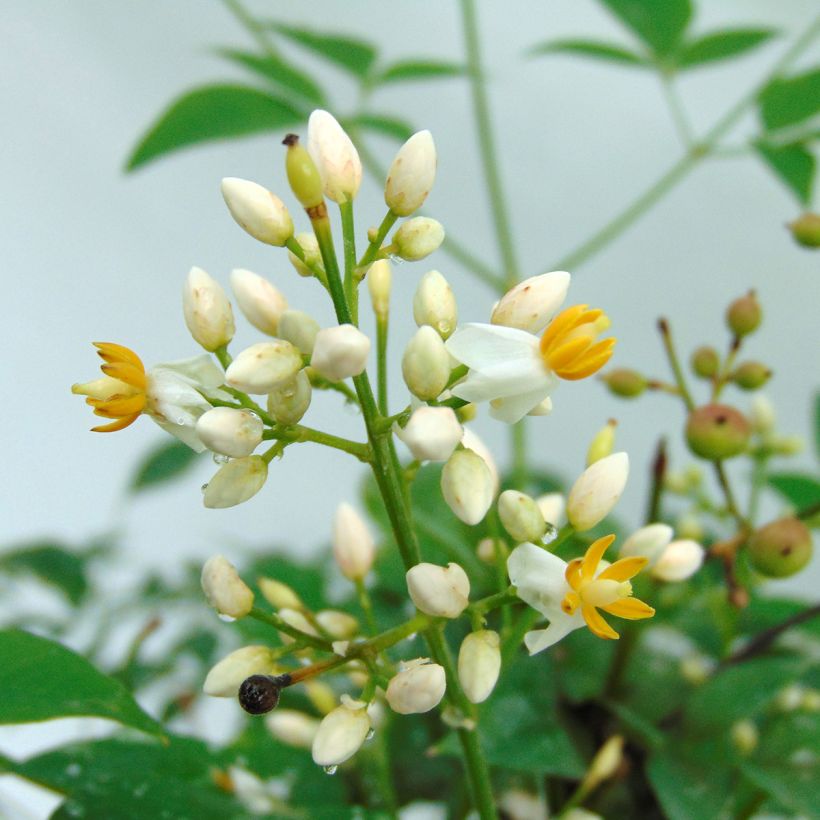

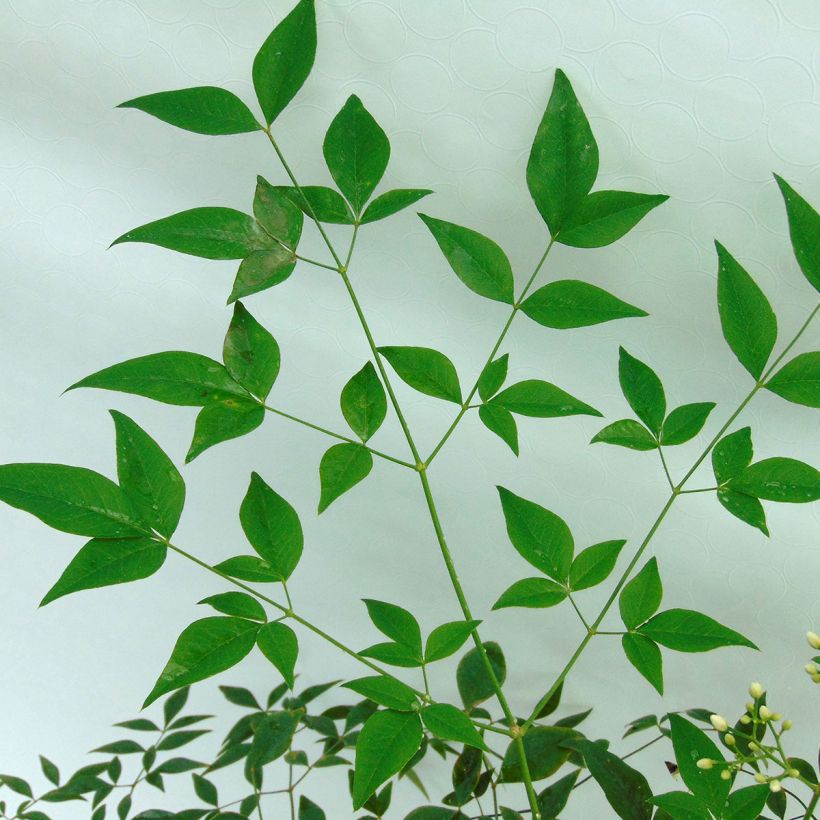

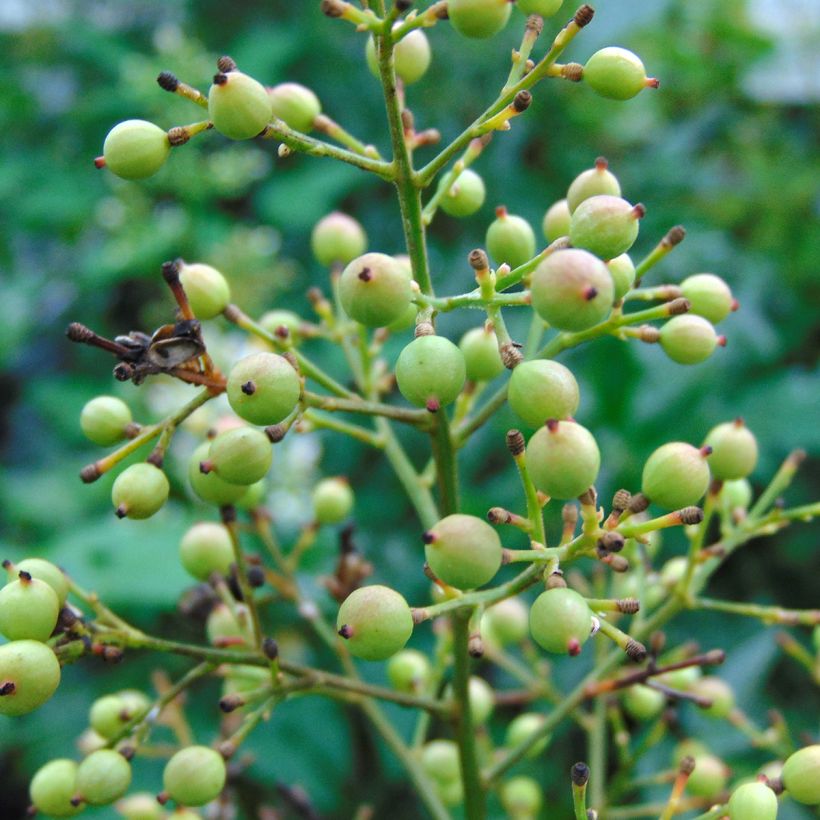

Plant habit
Flowering
Foliage
Botanical data
Nandina
domestica
Richmond
Berberidaceae
Sacred Bamboo, Heavenly Bamboo
Cultivar or hybrid
Other Nandina
Planting and care
Plant in soft, deep, well-drained soil, even slightly chalky, and moderately dry to moist. Once well established, this plant tolerates summer drought if the soil is deep. It prefers sunny but not scorching situations, or partial shade. Avoid drying winds and reserve a sheltered location from severe cold. This bush is hardy to -15°C (5°F) under optimal conditions, so it will be useful to protect its base with a thick layer of dead leaves before winter in the coldest regions. If the aboveground part were to freeze, the plant should be pruned back to ground level in February-March. Pruning is limited to removing dead wood and excess or weak branches in winter.
Planting period
Intended location
Care
-
, onOrder confirmed
Reply from on Promesse de fleurs
Evergreen shrubs
Haven't found what you were looking for?
Hardiness is the lowest winter temperature a plant can endure without suffering serious damage or even dying. However, hardiness is affected by location (a sheltered area, such as a patio), protection (winter cover) and soil type (hardiness is improved by well-drained soil).

Photo Sharing Terms & Conditions
In order to encourage gardeners to interact and share their experiences, Promesse de fleurs offers various media enabling content to be uploaded onto its Site - in particular via the ‘Photo sharing’ module.
The User agrees to refrain from:
- Posting any content that is illegal, prejudicial, insulting, racist, inciteful to hatred, revisionist, contrary to public decency, that infringes on privacy or on the privacy rights of third parties, in particular the publicity rights of persons and goods, intellectual property rights, or the right to privacy.
- Submitting content on behalf of a third party;
- Impersonate the identity of a third party and/or publish any personal information about a third party;
In general, the User undertakes to refrain from any unethical behaviour.
All Content (in particular text, comments, files, images, photos, videos, creative works, etc.), which may be subject to property or intellectual property rights, image or other private rights, shall remain the property of the User, subject to the limited rights granted by the terms of the licence granted by Promesse de fleurs as stated below. Users are at liberty to publish or not to publish such Content on the Site, notably via the ‘Photo Sharing’ facility, and accept that this Content shall be made public and freely accessible, notably on the Internet.
Users further acknowledge, undertake to have ,and guarantee that they hold all necessary rights and permissions to publish such material on the Site, in particular with regard to the legislation in force pertaining to any privacy, property, intellectual property, image, or contractual rights, or rights of any other nature. By publishing such Content on the Site, Users acknowledge accepting full liability as publishers of the Content within the meaning of the law, and grant Promesse de fleurs, free of charge, an inclusive, worldwide licence for the said Content for the entire duration of its publication, including all reproduction, representation, up/downloading, displaying, performing, transmission, and storage rights.
Users also grant permission for their name to be linked to the Content and accept that this link may not always be made available.
By engaging in posting material, Users consent to their Content becoming automatically accessible on the Internet, in particular on other sites and/or blogs and/or web pages of the Promesse de fleurs site, including in particular social pages and the Promesse de fleurs catalogue.
Users may secure the removal of entrusted content free of charge by issuing a simple request via our contact form.

































